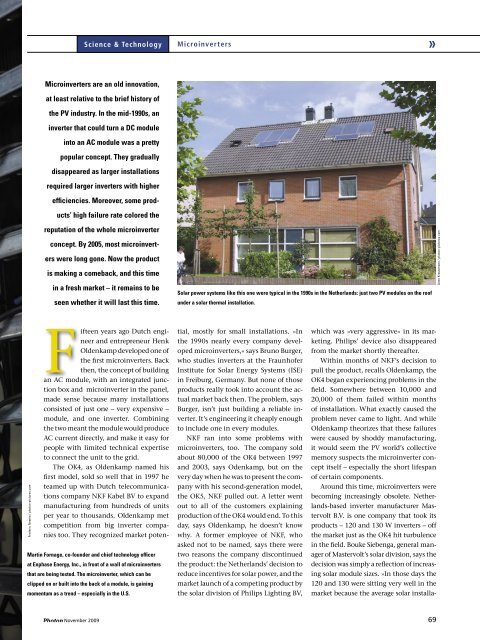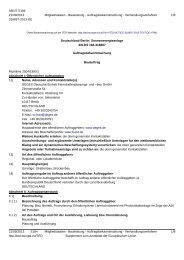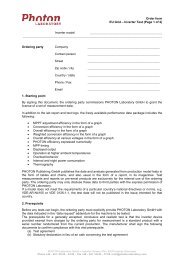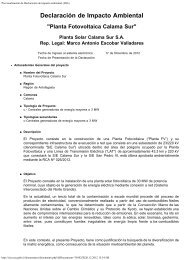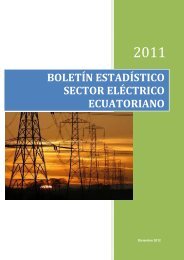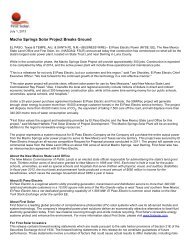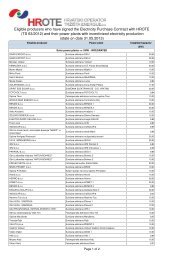INTRODUCTORY SPECIAL INTRODUCTORY ... - PHOTON Info
INTRODUCTORY SPECIAL INTRODUCTORY ... - PHOTON Info
INTRODUCTORY SPECIAL INTRODUCTORY ... - PHOTON Info
You also want an ePaper? Increase the reach of your titles
YUMPU automatically turns print PDFs into web optimized ePapers that Google loves.
Frederic Neema / photon-pictures.com<br />
Science & Technology<br />
Microinverters are an old innovation,<br />
at least relative to the brief history of<br />
the PV industry. In the mid-1990s, an<br />
inverter that could turn a DC module<br />
into an AC module was a pretty<br />
popular concept. They gradually<br />
disappeared as larger installations<br />
required larger inverters with higher<br />
effi ciencies. Moreover, some prod-<br />
ucts’ high failure rate colored the<br />
reputation of the whole microinverter<br />
concept. By 2005, most microinvert-<br />
ers were long gone. Now the product<br />
is making a comeback, and this time<br />
in a fresh market – it remains to be<br />
seen whether it will last this time.<br />
Fifteen years ago Dutch engineer<br />
and entrepreneur Henk<br />
Oldenkamp developed one of<br />
the fi rst microinverters. Back<br />
then, the concept of building<br />
an AC module, with with an integrated junc- junction<br />
box and microinverter in the panel,<br />
made sense because many installations<br />
consisted of just one – very expensive –<br />
module, and one inverter. Combining<br />
the two meant the module would produce<br />
AC current directly, and make it easy for<br />
people with limited technical expertise<br />
to connect the unit to the grid.<br />
The OK4, as Oldenkamp named his<br />
fi rst model, sold so well that in 1997 he<br />
teamed up with Dutch telecommunications<br />
company NKF Kabel BV to expand<br />
manufacturing from hundreds of units<br />
per year to thousands. Oldenkamp met<br />
competition from big inverter companies<br />
too. They recognized market poten-<br />
Martin Fornage, co-founder and chief technology offi cer<br />
at Enphase Energy, Inc., in front of a wall of microinverters<br />
that are being tested. The microinverter, which can be<br />
clipped on or built into the back of a module, is gaining<br />
momentum as a trend – especially in the U.S.<br />
Microinverters<br />
Solar power systems like this one were typical in the 1990s in the Netherlands: just two PV modules on the roof<br />
under a solar thermal installation.<br />
tial, mostly for small installations. »In<br />
the 1990s nearly every company developed<br />
microinverters,« says Bruno Burger,<br />
who studies inverters at the Fraunhofer<br />
Institute for Solar Energy Systems (ISE)<br />
in Freiburg, Germany. But none of those<br />
products really took into account the actual<br />
market back then. The problem, says<br />
Burger, isn’t just building a reliable inverter.<br />
It’s engineering it cheaply enough<br />
to include one in every modules.<br />
NKF ran into some problems with<br />
microinverters, too. The company sold<br />
about 80,000 of the OK4 between 1997<br />
and 2003, says Odenkamp, but on the<br />
very day when he was to present the company<br />
with his second-generation model,<br />
the OK5, NKF pulled out. A letter went<br />
out to all of the customers explaining<br />
production of the OK4 would end. To this<br />
day, says Oldenkamp, he doesn’t know<br />
why. A former employee of NKF, who<br />
asked not to be named, says there were<br />
two reasons the company discontinued<br />
the product: the Netherlands’ decision to<br />
reduce incentives for solar power, and the<br />
market launch of a competing product by<br />
the solar division of Philips Lighting BV,<br />
November 2009 69<br />
»<br />
which was »very aggressive« in its marketing.<br />
Philips’ device also disappeared<br />
from the market shortly thereafter.<br />
Within months of NKF’s decision to<br />
pull the product, recalls Oldenkamp, the<br />
OK4 began experiencing problems in the<br />
fi eld. Somewhere between 10,000 and<br />
20,000 of them failed within months<br />
of installation. What exactly caused the<br />
problem never came to light. And while<br />
Oldenkamp theorizes that these failures<br />
were caused by shoddy manufacturing,<br />
it would seem the PV world’s collective<br />
memory suspects the microinverter concept<br />
itself – especially the short lifespan<br />
of certain components.<br />
Around this time, microinverters were<br />
becoming increasingly obsolete. Netherlands-based<br />
inverter manufacturer Mastervolt<br />
B.V. is one company that took its<br />
products – 120 and 130 W inverters – off<br />
the market just as the OK4 hit turbulence<br />
in the fi eld. Bouke Siebenga, general manager<br />
of Mastervolt’s solar division, says the<br />
decision was simply a refl ection of increasing<br />
solar module sizes. »In those days the<br />
120 and 130 were sitting very well in the<br />
market because the average solar installa-<br />
Anne Kreutzmann / photon-pictures.com


